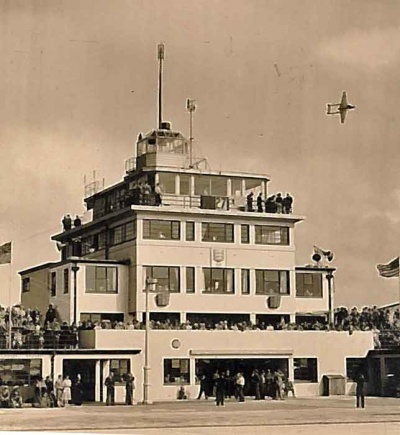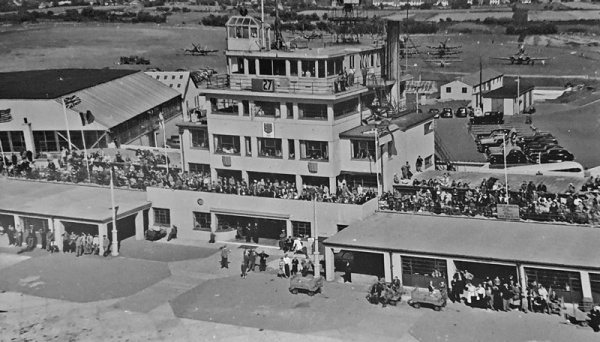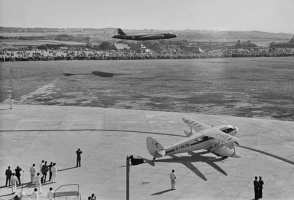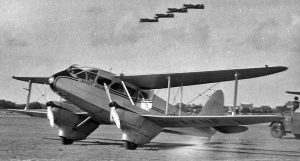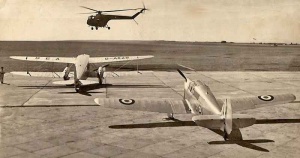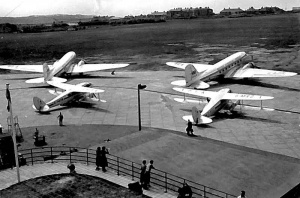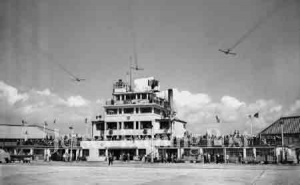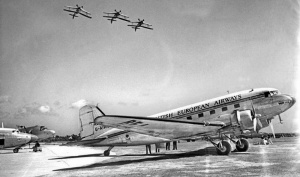THE modest proportions of St Peter's
Airport, Jersey, belie the fact that it
is one of the busiest air-traffic centres
in the United Kingdom. Last year it
handled 246,000 passengers and over
23,500 aircraft-movements — seven times as
many passengers and four times as many
aircraft as in 1938. All records are being
broken this year; on 4 July, for example,
286 landings and take-offs were made on
the 4,200ft single tarmac runway, and
4,090 passengers passed through the
terminal building.
Harbours and Airport Committee
The airport is administered, independently of the MCA, by the States of Jersey Harbours and Airports Committee, under the presidency of the Constable of St Ouen, Mr F Le Boutillier. Expressive of the airminded outlook of Jersey was the Committee's decision that an air display at St Peter should form a major contribution to Coronation festivities on the island.
Thanks to efficient stafrwork under Mr R T A Dalton, senior air-traffic control officer, a flow of scheduled passenger services was maintained while some 30,000 residents and holiday-makers watched the display—held in perfect weather on 9 July.
On arrival in Jersey the previous day, we had learned from Senator W H Krichefski, vice-president of the Harbours and Airports Committee, of some problems involved in organizing a display so far from the centres of the aircraft industry and Service flying. His particular regret was that the islanders would not see any of the latest high-speed British turbine-powered aircraft, due to the SBAC ruling against prototype demonstrations except in certain special circumstances.
Fortunately, the Ministry of Supply authorized a brief first appearance by the Viscount 700 prototype, which arrived from Wisley shortly before the display, carrying the Minister of Transport and Civil Aviation, Mr A T Lennox-Boyd, and Sir George Cribbett, Deputy Secretary.
An unusual start to the flying programme was provided by the arrival of the Lieut-Governor, Sir Edward Grasett, in a Sikorsky S-55 of No 705 Squadron. This, incidentally, was the very machine used by HRH the Duke of Edinburgh for a number of official journeys earlier this year, and it was flown by the same pilot, Lt Cdr R Spedding.
Airliner flypast
There followed a fly-past of airliners: a Cambrian Air Services Dove, Jersey Airlines' glittering new Heron, a BEA Elizabethan and the Viscount 700, flown by Capt "Dickie" Rymer, who passed by with two Darts feathered before setting course for Wisley.
Commentator Charles Gardner broadcast the news, just released, that this Viscount (G-AMAV) would be substituted for the BEA Viscount 701 G-AMNZ as an entry in the New Zealand Race next October. Now well established in regular service, Viscounts are making a great deal of money for BEA, who are doubtless quite happy about this change of plans.
From Florennes, Belgium, flew 12 Thunderjets, which broke from their tidy formation for individual simulated strafing of the airport. This event was carried through at low level with the dash for which Belgian Air Force pilots are justly famous. F/L L A Titmuss, leader of the CFS aerobatic team, impressed public and pilots with his polished handling of the Meteor 7, and four fellow-instructors (S/L Harkness, F/L James, F/O Evans and M Pit Fisher) gave a fine exhibition of air-drill in similar machines.
Patrouille d'Etampes
Despite some turbulence at low levels, the Patrouille d'Etampes performed superbly in their Stampe SV4 biplanes, and on landing were loudly applauded by the crowd. As in previous displays, an individualist demonstrated rolls, loops, bunts, stall turns and inverted flying, and each manoeuvre was reproduced in triplicate by the formation. The team, who participate in displays throughout the summer and train reserve pilots during the winter season, consists of Capt Kerguelen, Lt Darbois, Adj Claveau and Adj Menard.
Thus established, French prestige was upheld by Lt Tourangin, who appeared suddenly in a tip-tanked Dassault Ouragan from Bretigny. After a brief but impressive performance at high speed, he signed-off with a well-placed slow run past the crowd, using wheels, flaps and dive-brakes to stay in view as long as possible.
Three types of helicopter performed: S-55 and S-51 of 705 Squadron, and a US Army Bell-47 from La Rochelle, piloted by Lt J T Lendrum. Lt Cdr Spedding's spirited demonstration of the S-55 included one low-level manoeuvre which, had he been flying a fixed-wing aircraft, might have been termed a stall turn, but defies further description.
Led by Lt Cdr J W Powell, eight Firefly 6s of No 826 Sqn, Lee-on-Solent, made a dive-bombing attack on a grey conningtower which had "surfaced" near the runway. Their target was quickly lost in a shower of practice bombs and clouds of smoke, to the accompaniment of some suspiciously loud bangs. Belief that the submarine had been undermined was confirmed during the next and final event, when a Canberra apparently produced a sonic bang during a slow fly-past.
Four Canberras were seen at Jersey — a formation of three and an individualist, all from No 109 Sqn, Hemswell, and led by S/L J E S Hill. They put up an impressive show of speed and graceful manoeuvrability, concluding with a stirring, noisy "beat-up".
